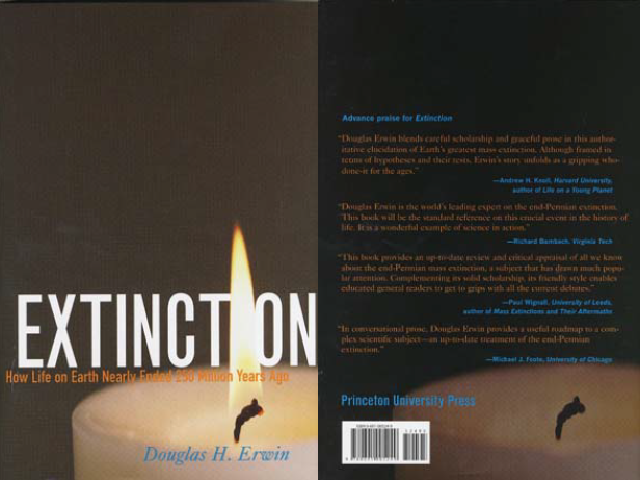Erwin, D.G. 2006. Extinction. How life on earth nearly ended 250 million years ago. – Princeton, New Jersey, Princeton University Press
Abstract
As a vertebrate palaeontologist whose focus lies mostly on Tertiary faunas, I was nearly oblivious to the events happening in much older eras. However, with this book by Douglas H. Erwin, I might consider a change of careers.
Douglas H. Erwin is a Senior Scientist and Curator at the Smithsonian’s National Museum of Natural History. His research focuses on the late Permian mass extinction, and his grand knowledge of this topic is reflected in this book. In the introduction, the ‘crime scene’ of the greatest biological crisis in the history of the earth is described. 95% of all living species died out in this catastrophe, but despite various theories, the cause behind their demise remains unclear. Erwin distinguishes six possible causes of the extinction; 1) the impact of a meteorite or comet; 2) the climatic aftermath of massive volcanic flood basalts in Siberia; 3) extinction due to a decline in the number of biotic provinces; 4) glaciations; 5) the disappearance of oxygen from shallow waters; and finally 6) the ‘Murder on the Orient express’ hypothesis suggesting multiple interacting causes. Read more...





